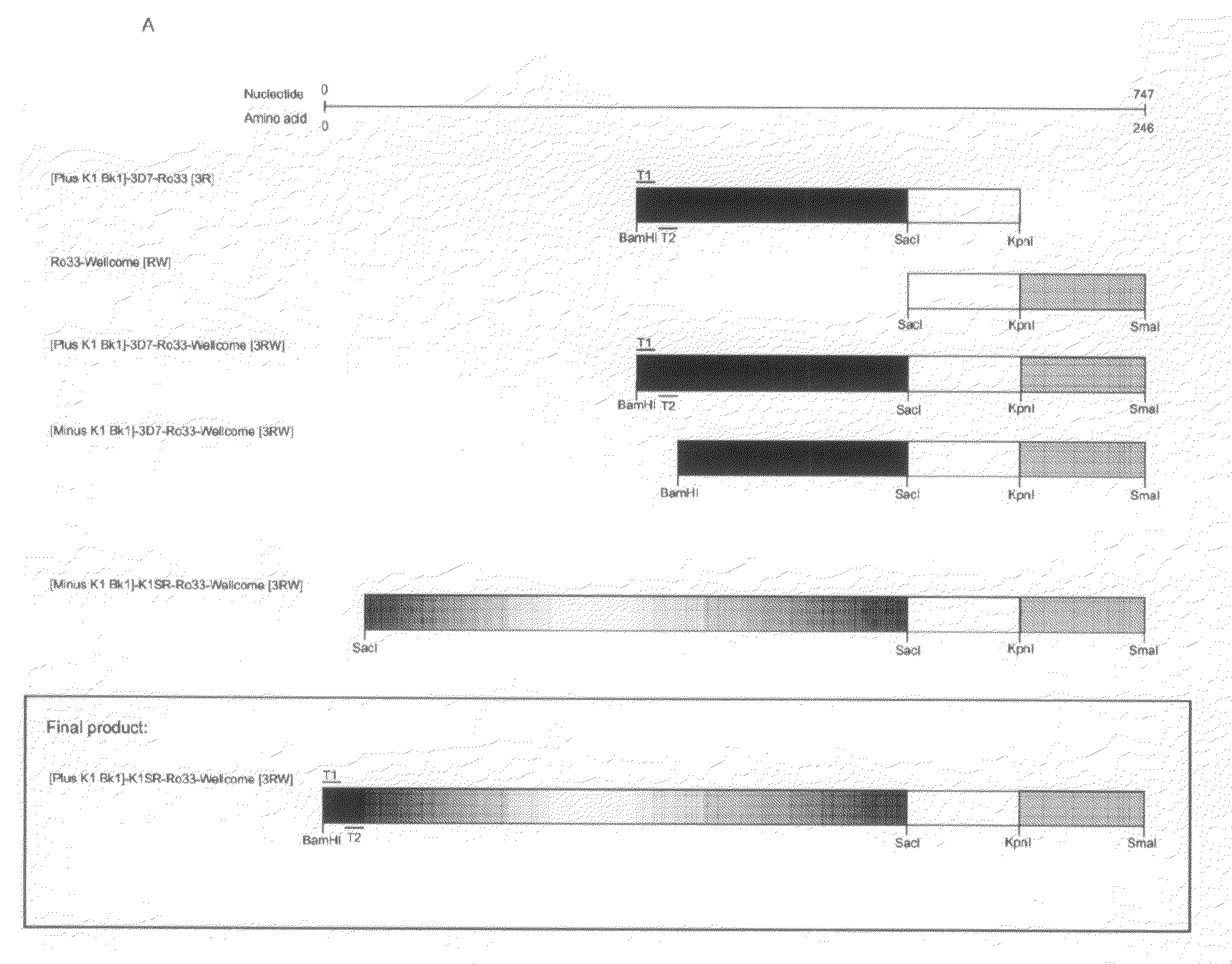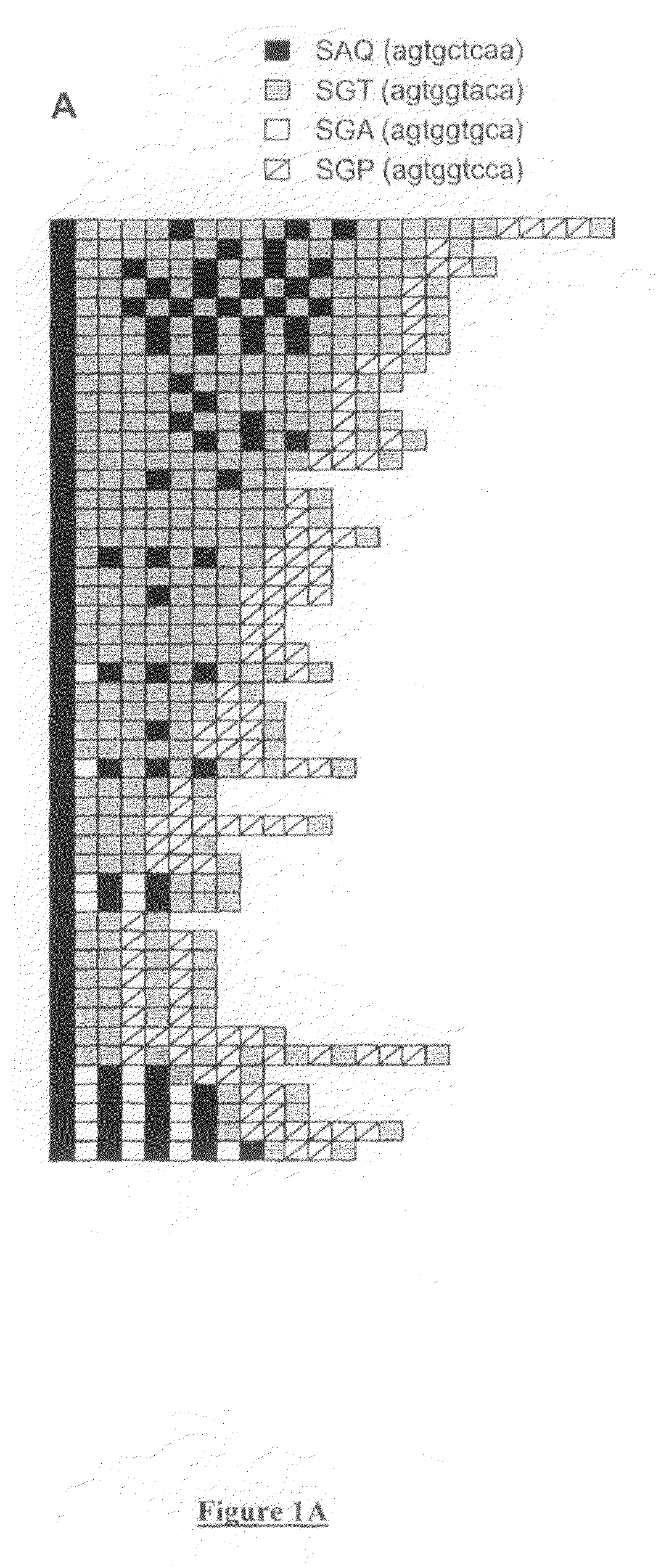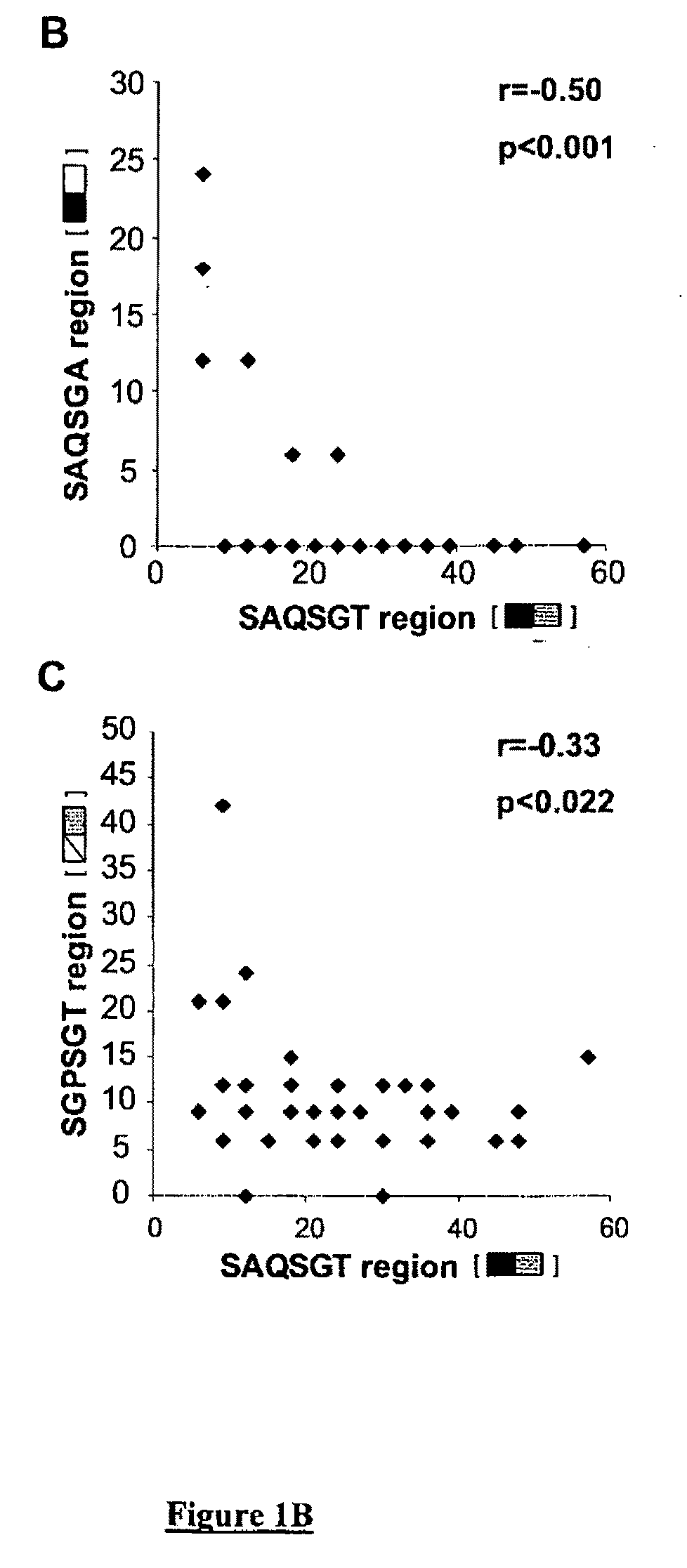Malaria Vaccines
- Summary
- Abstract
- Description
- Claims
- Application Information
AI Technical Summary
Benefits of technology
Problems solved by technology
Method used
Image
Examples
example 1
Obtaining of the K1 Type Super Repeat Sequence Designated K1SR 1
[0058]Sequencing of P. falciparum MSP1 Block 2 Region from Zambian Samples.
[0059]A portion of the msp1 gene spanning the block 2 region was amplified from genomic DNA isolated from peripheral blood samples of 91 individuals with P. falciparum infections in Northern Zambia. Polymerase chain reaction primers BK1F and BK3R that annealed to conserved sequences in block 1 and block 3 were used with amplification conditions as described previously (Conway et al., (1998) J. Immunol. 161, 347-359). Amplification products were run and visualised on 2% agarose gels. Allelic sizes of the gene fragment range from approximately 400-600 base pairs, and many isolates contain more than one genetic type of P. falciparum, so the predominant band was excised for each isolate. This was then purified and DNA sequencing of both strands was performed directly using the BK1F and BK3R primers, using BigDye v3.1 chemistry and electrophoresis on ...
example 2
Construction of Tandem Array Fusion Proteins Containing the K1SR 1
[0077]DNA was obtained from P. falciparum clone 3D7 and P. falciparum isolates RO33 and Wellcome maintained by the WHO Registry of Standard Strains of Malaria Parasites at the University of Edinburgh. A recombinant DNA with BamHI and Sma I ends was inserted into the vector pQE30 so as to provide a sequence encoding an N-terminally His tagged tandem array fusion protein consisting of the following components from the N to C-terminus:
(a) a His tag of 6 His residues encoded by the vector;
(b) a MSP1 3D7 block 1-block 2 allele (Genbank accession no. NP—704838.1; amino acid positions 20-133; 3D7 MSP1 block 1, amino acid residues 20-53 and 3D7 MSP1 block 2 allele (including flanking sequences), amino acid residues 54-133.)
(c) the K1 type synthetic repeat sequence;
(d) the MSP1 RO33 block 2 allele (accession number AB116601; amino acid residues 54-106; whole allele including flanking sequences) and
(e) the MSP1 Wellcome block 2...
example 3
Construction of the Multi-Allelic Hybrid Construct Shown in FIG. 8
Part 1
Generation of the K1SR Fused to Both the 5′ and 3′ K1 Type Flanking Sequences
Step 1: Generation of N-Terminal Flanking Region and T Cell Epitopes
[0080]Two long oligonucleotides [5′flank hyb R1+5′ flank hyb F1] covering both desired T cell epitopes and the block 2 flanking region were fused together yielding a 163 bp product using a PCR protocol.
Step 2: Fusing the K1SR to the 3′ Flanking Region
[0081]A K1SR forward primer was used in conjunction with a 3′ primer (3′ flank R1) which was designed with a K1SR complementary overhang to fuse seamlessly using PCR.
Step 3: Fusing the 5′Flanking / T Cell Epitopes to the K1 SR+3′Flanking Region
[0082]The purified products from Steps 1 and 2 can be combined in a PCR reaction and fused together using the primers 5′ flank hyb R1 and 3′ flank R1.
Part 2
Step 4: Verification of Products
[0083]Each of the products generated in Steps 1-3 can be cloned into the pGEMT-easy vector and sequ...
PUM
| Property | Measurement | Unit |
|---|---|---|
| Temperature | aaaaa | aaaaa |
| Immunogenicity | aaaaa | aaaaa |
Abstract
Description
Claims
Application Information
 Login to View More
Login to View More - Generate Ideas
- Intellectual Property
- Life Sciences
- Materials
- Tech Scout
- Unparalleled Data Quality
- Higher Quality Content
- 60% Fewer Hallucinations
Browse by: Latest US Patents, China's latest patents, Technical Efficacy Thesaurus, Application Domain, Technology Topic, Popular Technical Reports.
© 2025 PatSnap. All rights reserved.Legal|Privacy policy|Modern Slavery Act Transparency Statement|Sitemap|About US| Contact US: help@patsnap.com



